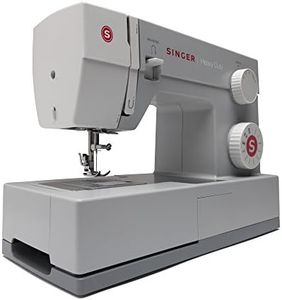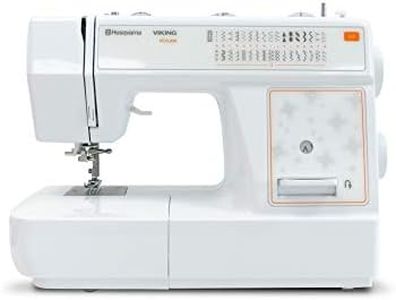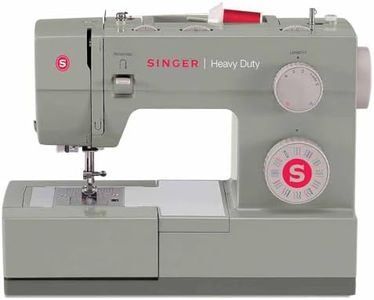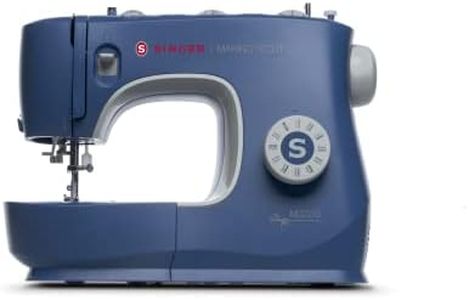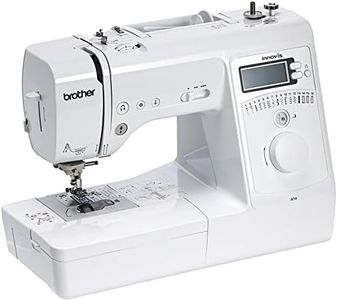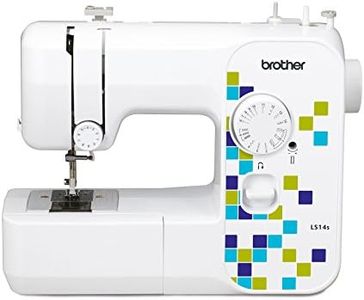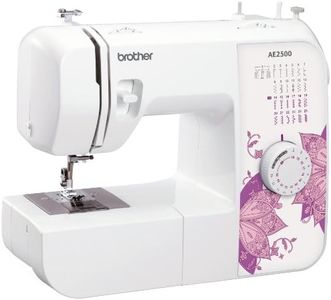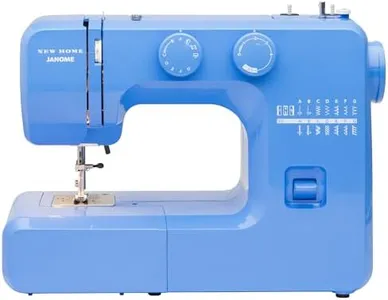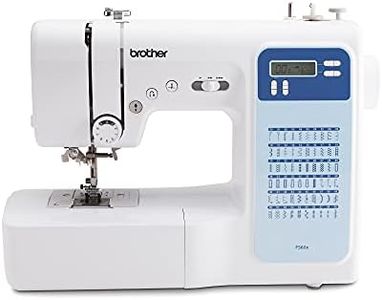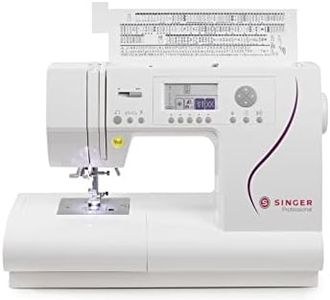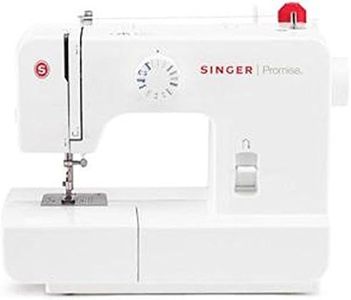We Use CookiesWe use cookies to enhance the security, performance,
functionality and for analytical and promotional activities. By continuing to browse this site you
are agreeing to our privacy policy
10 Best Basic Sewing Machines
From leading brands and best sellers available on the web.Buying Guide for the Best Basic Sewing Machines
Choosing the right basic sewing machine can be a rewarding experience, especially if you want to explore sewing as a hobby or handle simple repairs and projects. Before making your decision, think about what types of sewing tasks you'll do most often, how easy you want the machine to be to use, and what features will help you grow your skills. Always try to get a feel for the controls and ask yourself: Will this machine make sewing enjoyable for me? Pick something that suits your current comfort level but can also support you as you learn.Stitch TypesStitch types refer to the different kinds of stitches the machine can create, such as straight stitches, zigzag, and sometimes a few decorative options. This spec is important because it determines what kinds of tasks the sewing machine can handle. Machines with just a straight stitch are great for basic sewing, while zigzag and a few extra stitches add versatility for working with knits, finishing edges, or light decorative work. If you're mostly hemming or mending, a few basic stitches will be enough; if you want to experiment with crafts, look for a machine with at least 6-10 stitch options.
Buttonhole FunctionThe buttonhole function describes how the machine creates buttonholes. Some machines require you to manually adjust the settings for each step, while others have a one-step buttonhole feature that does it automatically. This is important if you plan to sew garments, as making neat buttonholes can be tricky. If you expect to do dressmaking or shirts, a one-step buttonhole can save time and frustration. For occasional use, a four-step (manual) buttonhole function will suffice.
Ease of UseEase of use covers how simple the machine is to operate — things like threading, changing the needle, and selecting stitches. This spec matters because a machine that's hard to figure out can be discouraging, especially for beginners. Look for features like an automatic needle threader and clearly marked stitch dials if you want the process to be easier. If you're new to sewing, machines with intuitive controls and straightforward threading diagrams are best.
Build QualityBuild quality relates to how sturdy and durable the sewing machine feels. Most basic machines are made of plastic, but the internal parts might be metal or plastic. A heavier machine usually means it's more stable and less likely to 'walk' on the table during use. If you plan to sew heavy fabrics, or use the machine regularly, opt for a machine that feels solid and has good reviews for durability. If you need a light machine for portability, check it feels sturdy enough for your chosen projects.
Adjustable Stitch Length and WidthAdjustable stitch length and width let you customize the size of your stitches. This is important for flexibility: longer stitches are good for basting and gathering, while shorter stitches are stronger and good for seams. Adjustable width mainly affects zigzag stitches and is helpful for finishing raw fabric edges. If you're only doing occasional repairs, this feature isn't critical, but for creative projects or garment sewing, having some adjustability will let you get better results.
Free Arm CapabilityA free arm allows you to remove part of the machine's base, making it easier to sew small, circular items like sleeves or pant legs. This is very helpful for alterations and garment construction. If you think you'll need to sew cuffs, hems, or children's clothes, prioritize a machine with a free arm. For flat sewing only, this isn't as important.
